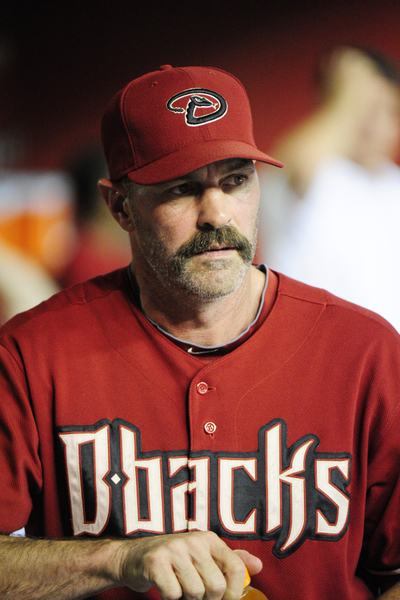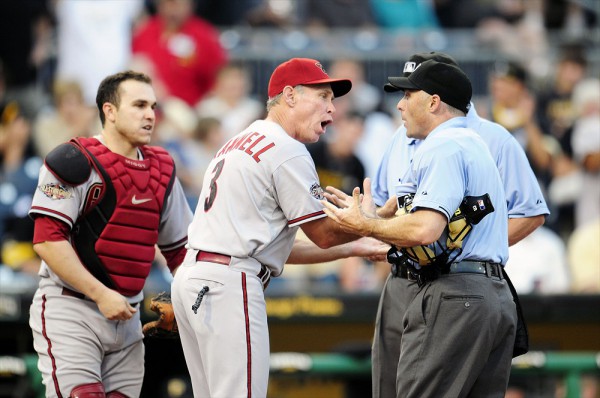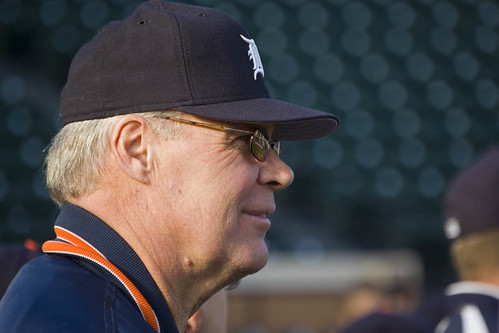The Gentlemanly Tiger
Carlos Guillen, it is said, is at peace with his decision to retire from big league baseball.
Well, why wouldn't he be?
Guillen, 36, was a tormented ball player---physically. It began with pulmonary tuberculosis in 2001---that nearly killed him---and it continued up until last year, when he was ravaged by knee injuries.
This wasn't a retirement so much as the raising of a white flag.
Guillen has decided that no longer will he put his banged up body through the rigors of another spring training and 162-game marathon.
After not being tendered a contract by the Tigers after last season, Guillen signed a minor league deal with the Seattle Mariners, his first MLB team, last month. But last week, Guillen informed the Ms that he won't be vying for a big league job, after all.
Guillen's physical ailments have been much ballyhooed in Detroit. He's spent more time on the disabled list than eggs on a grocery list. His career in recent years has been a medical game of Whack-a-Mole: every time Guillen overcame something, another thing popped up.
It fascinates me how certain players just can't seem to stay healthy. I'm reminded of Larry Hisle, a brilliant outfielder for the Phillies, Twins and Brewers in the 1970s and early-1980s. It was as a Brewer where Hisle was cursed with one injury after another. Usually it was something to do with his shoulder. Hisle, when he could stay together physically, swung a fearsome right-handed bat. He just couldn't stay together for very long.
From 1979 thru 1982, Hisle's at-bat totals read more like temperatures: 96, 60, 87, 31.
In 1977 (Twins) and 1978 (Brewers) combined, Hisle hit 62 homers and amassed 234 RBI and a nearly .300 BA. Then the injury bug bit and Hisle couldn't find an antidote.
Carlos Guillen was the most gentlemanly of Tigers while he was in Detroit. He was a favorite of manager Jim Leyland, who raved about Guillen's class and dignity.
Like Larry Hisle was 30 years prior for the Twins and Brewers, Guillen, when healthy, was a key cog in the Tigers' attack. He moved around the diamond defensively---partly to make room for others, and partly to find his own niche---and that only endeared him to Leyland even more.
Guillen's glove could never be mistaken for that of the Golden variety, but he was competent defensively and smart. He was one of the few Tigers, at times, to show patience at the plate, when so many of them were flailing away at pitches outside the strike zone.
I'll never forget the play that proved to be the last straw for Guillen physically. It was in August 2010, the Tigers at New York to battle the Yankees. Guillen, playing 2B, ended the game by turning a double play. New York's Brett Gardner slid hard into Guillen, injuring the latter's knee in the process. The Tigers won, but they lost Guillen for the season.
He tried microfracture surgery and came back last July, but only got in 95 at-bats. Guillen was left off the post-season roster and then left off the roster entirely by the Tigers after the season.
Carlos Guillen was a fine Tiger; a mentor to fellow Latin American players; and an adept hitter who was good in the clutch.
What he wasn't, after 2007, was healthy.
Enjoy retirement, no. 9.
Well, why wouldn't he be?
Guillen, 36, was a tormented ball player---physically. It began with pulmonary tuberculosis in 2001---that nearly killed him---and it continued up until last year, when he was ravaged by knee injuries.
This wasn't a retirement so much as the raising of a white flag.
Guillen has decided that no longer will he put his banged up body through the rigors of another spring training and 162-game marathon.
After not being tendered a contract by the Tigers after last season, Guillen signed a minor league deal with the Seattle Mariners, his first MLB team, last month. But last week, Guillen informed the Ms that he won't be vying for a big league job, after all.
Guillen's physical ailments have been much ballyhooed in Detroit. He's spent more time on the disabled list than eggs on a grocery list. His career in recent years has been a medical game of Whack-a-Mole: every time Guillen overcame something, another thing popped up.
It fascinates me how certain players just can't seem to stay healthy. I'm reminded of Larry Hisle, a brilliant outfielder for the Phillies, Twins and Brewers in the 1970s and early-1980s. It was as a Brewer where Hisle was cursed with one injury after another. Usually it was something to do with his shoulder. Hisle, when he could stay together physically, swung a fearsome right-handed bat. He just couldn't stay together for very long.
From 1979 thru 1982, Hisle's at-bat totals read more like temperatures: 96, 60, 87, 31.
In 1977 (Twins) and 1978 (Brewers) combined, Hisle hit 62 homers and amassed 234 RBI and a nearly .300 BA. Then the injury bug bit and Hisle couldn't find an antidote.
Carlos Guillen was the most gentlemanly of Tigers while he was in Detroit. He was a favorite of manager Jim Leyland, who raved about Guillen's class and dignity.
Like Larry Hisle was 30 years prior for the Twins and Brewers, Guillen, when healthy, was a key cog in the Tigers' attack. He moved around the diamond defensively---partly to make room for others, and partly to find his own niche---and that only endeared him to Leyland even more.
Guillen's glove could never be mistaken for that of the Golden variety, but he was competent defensively and smart. He was one of the few Tigers, at times, to show patience at the plate, when so many of them were flailing away at pitches outside the strike zone.
I'll never forget the play that proved to be the last straw for Guillen physically. It was in August 2010, the Tigers at New York to battle the Yankees. Guillen, playing 2B, ended the game by turning a double play. New York's Brett Gardner slid hard into Guillen, injuring the latter's knee in the process. The Tigers won, but they lost Guillen for the season.
He tried microfracture surgery and came back last July, but only got in 95 at-bats. Guillen was left off the post-season roster and then left off the roster entirely by the Tigers after the season.
Carlos Guillen was a fine Tiger; a mentor to fellow Latin American players; and an adept hitter who was good in the clutch.
What he wasn't, after 2007, was healthy.
Enjoy retirement, no. 9.











 Proud Member of DIBS
Proud Member of DIBS
